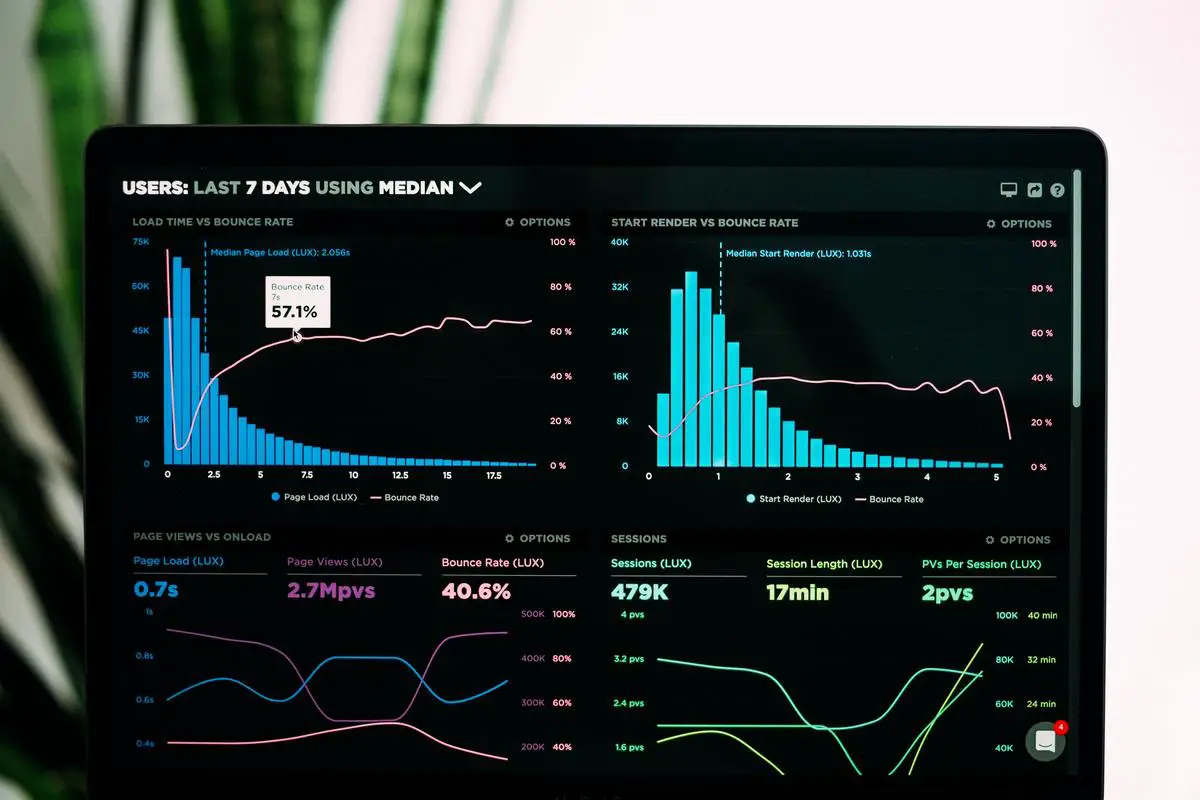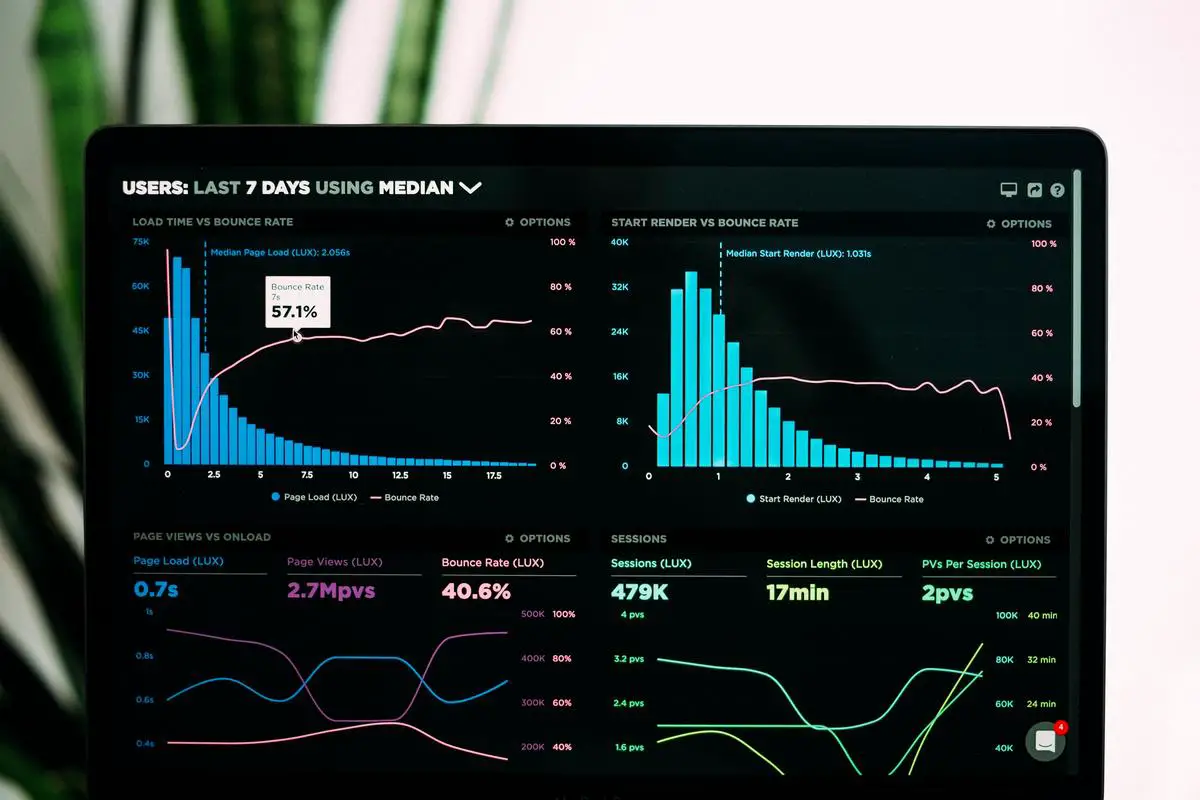In the era of data-driven decisions, understanding the behavior of your website visitors has become vital for success. Web Analytics offers a comprehensive view of this behavior, empowering you to optimize your site for better user engagement and ultimately, conversions. This article addresses the fundamental concepts of web analytics, delving into how the system works, its importance, and the diverse types of data it collects. It’s through these basics that you’ll gain a firm foundation for exploring web analytics further. Additionally, we’ll dive into the world of Google Analytics and other prominent web analytics tools, shedding light on their functionalities and inherent strengths. Lastly, we provide a step-by-step guide to implementing web analytics on your own website, including setting up the tracking code, defining clear goals, and interpreting the collected data for actionable insights.
Understanding Web Analytics Basics
Understanding Web Analytics Basics
Web analytics refers to the process of collecting, measuring, and analyzing internet data to enhance web usage. It is an essential tool for heavy-duty webmasters, digital marketers, and business owners to understand their audience’s behavior and maximize the website’s effectiveness.
How Web Analytics Works
Web analytics works mainly by tracking and recording user activity when they visit a website. It uses page tagging and log file recording to capture granulated data about views, clicks, scrolls, and navigation patterns. A JavaScript code is embedded into each page of the website that collects data and sends it back to the Analytics server when the user visits the page.
Importance of Web Analytics
Web analytics plays a crucial role in improving the effectiveness of a website by providing invaluable insights into user behavior and interaction. It helps identify the most popular pages, the amount of time users are spending on these pages, and where viewers are coming from geographically. These insights can help tailor the content of the website to better engage and retain users, effectively improving overall return on investment.
Additionally, web analytics also help identify any technical issues that may hinder the site’s performance and affect user experiences negatively. Bot traffic, bounce rates, and loading time are some of the parameters critical to maintaining website health, and can be monitored through analytics.
Types of Data Collected by Web Analytics
Web analytics collects a variety of data types to provide comprehensive insights. These include:
- User Demographics: Information about the users themselves, such as their age, gender, and geographical location.
- Behavior Data: Shows how the user interacts with the site, including pages viewed, time spent on site, and the user’s navigation between pages.
- Acquisition Data: Information about how users found the site, through organic search, social media, paid ads, direct visits, or other websites.
- Conversion Data: Shows how many users completed a desired action, like signing up for a newsletter, or making a purchase.
Understanding each data type and how to interpret it is essential in stretching a site’s potential to engage users and achieve desired outcomes. This fundamental knowledge forms the base of everything you’ll be doing with web analytics.

Photo by lukechesser on Unsplash
Google Analytics And Other Major Tools
Setting Up Google Analytics
To set up Google Analytics, first sign in to your Google Account and navigate to the Google Analytics page. Click “Start for free”, and follow the steps to set up your account. Enter an account name, and provide the required website details, including the website URL and industry category.
You’ll need to add a tracking ID to your website. This ID enables Google Analytics to collect data from your site. Once your account is set up, Google Analytics will provide the tracking code, which you’ll need to add to every webpage you want to track.
Fundamental Features of Google Analytics
Google Analytics provides a wealth of data about your website’s performance. Here are a few of the most fundamental features:
- Audience Overview: Helps you understand your users, their demographic details, their interests, and their behavior on your site.
- Acquisition Reports: Provides data about how users land on your site, what channels they come from, and what campaigns activated this visit.
- Behavior Reports: Offers insights into how users interact with your site, what pages they visit, and what actions they take.
Advanced Features of Google Analytics
Google Analytics also provide advanced features for deep data analysis:
- Event Tracking: Event tracking is a feature under Behavior Reports that digs deeper into user interaction. For example, if a user submits a form or clicks a button.
- Conversion Tracking: This is to monitor specific goals or conversions that you have set generated by a user action.
- Google Analytics Real-Time Reports: This feature provides live data about who is on your site, what pages they’re viewing, and where they’re from.
Using Other Major Tools for Web Analytics
While Google Analytics is dominant in web analytics, it’s not the only tool. Other analytics tools include Adobe Analytics, Crazy Egg, and Clicky.
- Adobe Analytics: offers seamless integration with other Adobe products and provides detailed segmentation of your audience.
- Crazy Egg: provides unique visual representations of data, including heat maps that show you where visitors click and how far down they scroll the page.
- Clicky: is known for real-time data processing, heatmaps, and a user-friendly interface.
Each tool has its specialty. Choose the one that matches with your business model and requirement after thoroughly reading their features.
Integrating the Tools
After you’ve chosen your analytics tool, you’ll need to integrate it with your website. This usually involves adding a tracking code to your site’s header or footer. Most tools will provide a straightforward guide on how to do this.
Ensure that your tracking information is reflecting correctly. Based on the tool, you may need to check the real-time section or wait for 24 hours to get the analytical data.
Implementing website analytics requires continuous tracking and analysis. It empowers the realtime tracking of your website performance to shape better future strategies. It’s the backbone for improving user experience, funneling, conversion, and achieving the overall objective.

Photo by lukechesser on Unsplash
Implementing Web Analytics
Setting Up a Web Analytics Service
Before implementing web analytics, the first step is to choose a web analytics service. Google Analytics is the most widely used tool due to its comprehensiveness and user-friendly interface. Once you have selected a service, you will need to create an account. In Google Analytics, you can do this by signing up with your Google account. After doing that, add your website by entering the URL into the platform.
Installing the Tracking Code
Upon adding your website, the service will provide you with a unique tracking code, usually a JavaScript code snippet. This tracking code should be added to every page of your website. In Google Analytics, this can usually be found in the admin settings under Tracking Info > Tracking Code. The tracking code needs to be inserted in your website’s HTML, usually within the head tag. This code will allow the analytics tool to start collecting data from your website.
Defining Goals
Defining goals is a crucial step to measure how well your site fulfills your target objectives. A goal represents a completed activity, called a ‘conversion’, that contributes to the success of your business. This could be anything from spending a certain amount of time on a site, visiting a specific page, or making a purchase. Again, using Google Analytics as an example, you can access the goals setting under Admin > Goals. Here, you can set up new goals, define the type of goals and assign a monetary value to it.
Interacting with your Dashboard
Now that everything is set up, the analytics tool will start collecting data and you can monitor this on your dashboard. This dashboard is essentially your control and monitoring center. It provides you an overview of your website’s performance. Here you can see several key metrics like audience demographics, user behavior, acquisition channels, real-time users on your site, etc. You will be able to see all this information categorized in different sections.
Interpreting Data
The final step in implementing web analytics is interpreting the collected data. Each metric has its own significance. For example, ‘Page Views’ shows the total number of pages viewed, ‘Bounce Rate’ indicates the percentage of people who land on your website and do nothing on the page they entered, ‘Average Session Duration’ shows the average time users spend on your website. Comparing these metrics over time will provide an indication of how changes to your website or marketing strategy are affecting its performance.
Performing these steps will allow you to effectively implement web analytics on your website. The data collected will provide valuable insights that can guide your marketing efforts and help optimize your website’s performance. Happy analyzing!

Web analytics is a compelling tool in the hands of website owners and marketers, capable of providing actionable insights and helping streamline strategies. People often underestimate its potential, treating it as a mere data source, but an informed user understands that it’s an insightful consultant. From grasping the basics to working with tools like Google Analytics, web analytics is a journey of constant learning. The practical guide to implementing web analytics shared in this article is your passport to that journey. By correctly setting up your tracking code, defining clear goals, and understanding the data you collect, you’re unlocking a reservoir of knowledge important for your websites’ success. Now armed with this knowledge, you’re ready to approach web analytics with a strategic mindset and work towards improving your online presence.
